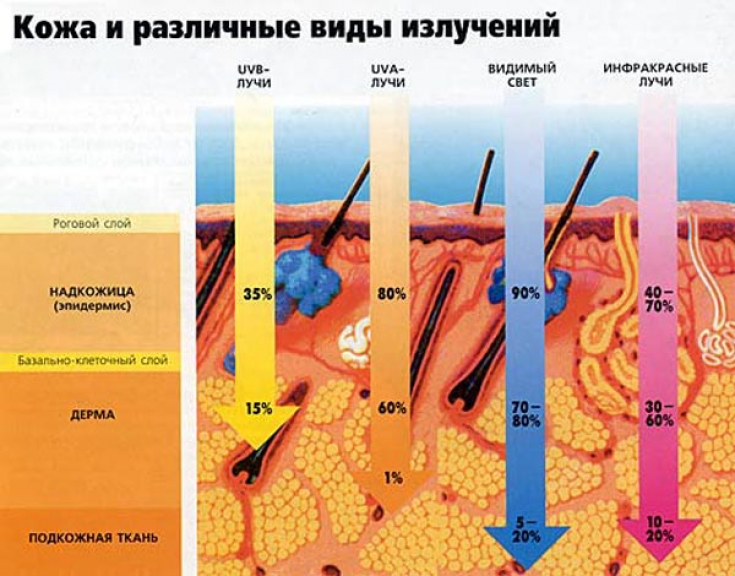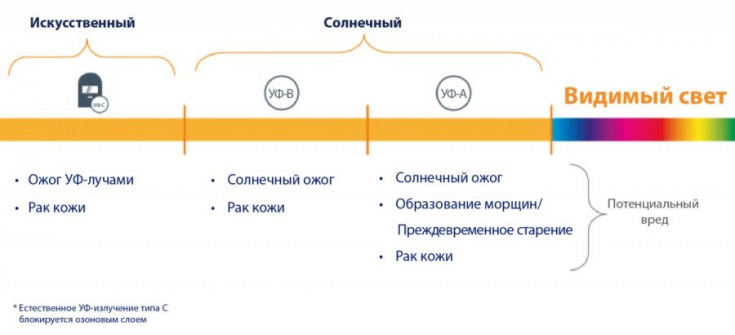According to a US pilot study, it only takes one day of sunscreen use to get several of its ingredients into the bloodstream at a high enough dosage.
The following chemicals were highly absorbable: avobenzone, oxybenzone, ecamsula and octocrylene. Among these, oxybenzone is the most wary, as it is one of the most common causes of contact allergies, and is also associated with hormonal changes in men and shorter pregnancies.
Read on estet-portal.com, is sunscreen really that dangerous.
General recommendations for the use of sunscreen
The American Academy of Dermatology recommends applying at least 30 grams of sunscreen to all exposed skin every two hours or after swimming, including the back, neck, face, ears, tops of the feet, and legs.
If the patient has thinning hair, apply sunscreen to the scalp, apply sunscreen to the hair, or wear a wide-brimmed hat.
Lip balm with an SPF of at least 15 is applied to protect lips. And since UV rays are always around us, sunscreen should be applied to exposed areas even on cloudy days and in winter.

While science continues to answer questions about sunscreen, experts are urging the public to continue protecting their skin from the sun's dangerous rays. The American Academy of Dermatology states that there are ways to protect yourself from UV radiation other than sunscreen. It is important to be in the shade, especially between 10:00 and 14:00, wear protective clothing and sunglasses.
Effective sun protection: how to keep the patient safe from mistakes
Results of a study on the adsorption of sunscreens into the bloodstream
"Maximum" the use of four different sunscreen formulations resulted in plasma ingredient concentrations exceeding the acceptable threshold.
In an open study, 24 people (mean age 35.5 years) applied 2mg/cm2 of sunscreen to 75% of body surface area four times a day for 4 days. During this period, 30 blood samples from these patients were taken.
Read the latest articles in Telegram
The primary outcome was the peak plasma concentration of avobenzone from days 1 to 7. Plasma concentrations of the sunscreen components oxybenzone, octocrylene and ecamsula also increased over the same time period.

All four sunscreen active ingredients were absorbed into the systemic circulation, with concentrations exceeding 0.5 ng/ml.
Are sunscreens dangerous?
Systemic absorption of sunscreen ingredients confirms the need for further research to determine the clinical significance of these findings.
The results of this study do not indicate that people should refrain from using sunscreen.
Demonstrating systemic absorption well above the FDA guideline does not mean these ingredients are unsafe. However, it is now, first of all, important to determine whether the systemic absorption of sunscreen poses risks to human health.
The results of this study may be misleading. It has always been known that the absorption of sunscreen into the bloodstream is very low and there is no evidence that this is a problem, and using a broad spectrum SPF of at least 30 daily is the best way to protect yourself from skin cancer.
You may also be interested in: Skin protection in summer: what can be dangerous besides the sun







Add a comment